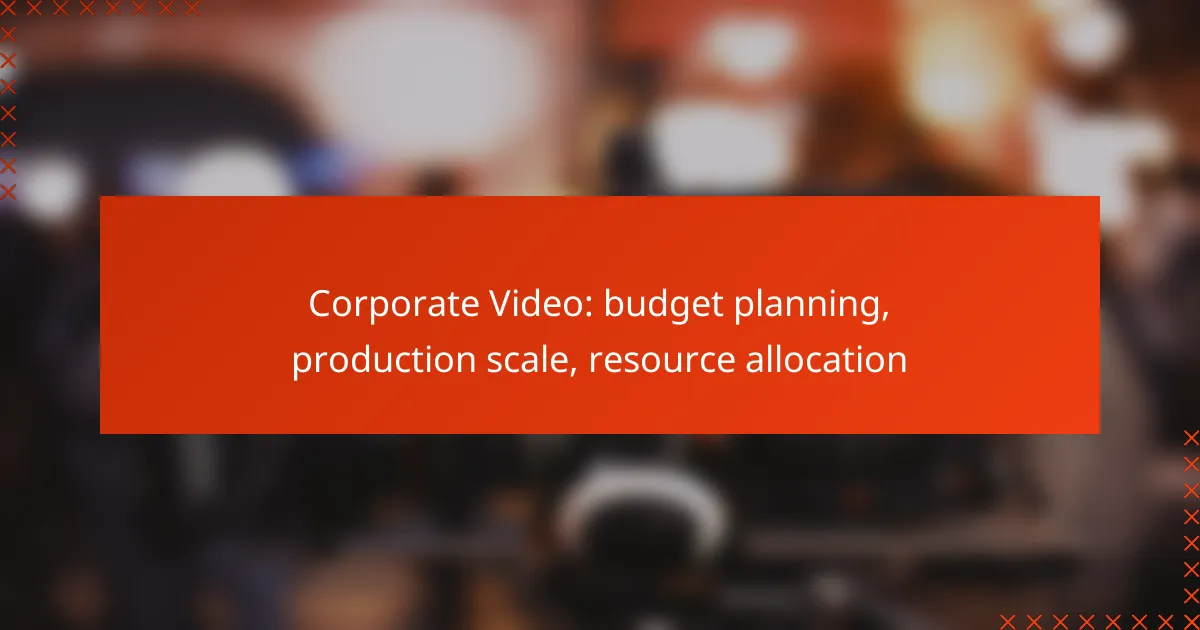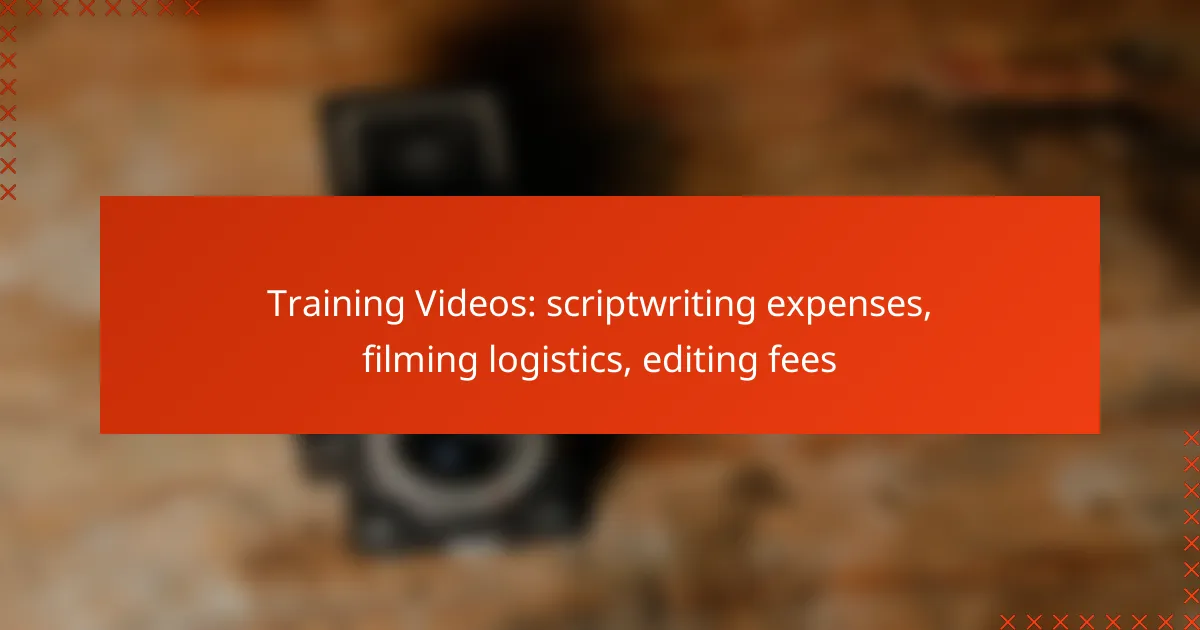When planning a webinar, it’s essential to consider various costs, including technology, promotional expenses, and speaker fees. Technology costs can vary significantly based on the tools used, while promotional expenses depend on the marketing strategies employed. Additionally, speaker fees fluctuate based on experience and audience size, making it crucial to budget accordingly for a successful event.

What are the costs of technology for webinars?
The costs of technology for webinars can vary significantly based on the tools and services you choose. Key expenses include video conferencing software, webinar platforms, hardware, and internet bandwidth, all of which are essential for delivering a seamless online experience.
Video conferencing software fees
Video conferencing software fees typically range from free options to monthly subscriptions costing around $15 to $50 per host. Popular platforms like Zoom and Microsoft Teams offer tiered pricing based on features such as participant limits and recording capabilities.
When selecting software, consider the number of attendees and necessary functionalities like screen sharing and breakout rooms. Free versions may suffice for smaller groups, but larger webinars often require paid plans for enhanced features.
Webinar platform subscription costs
Webinar platform subscription costs can range from approximately $50 to several hundred dollars per month, depending on the provider and features. Platforms like GoToWebinar and Webex offer various pricing tiers based on audience size and additional tools like analytics and marketing integrations.
Evaluate your needs carefully; if you plan to host frequent webinars, investing in a more robust platform may save costs in the long run. Look for platforms that offer free trials to test their capabilities before committing.
Hardware expenses
Hardware expenses for webinars can include a quality webcam, microphone, and possibly additional lighting equipment. A decent webcam can cost between $50 and $150, while a good microphone may range from $30 to $200.
Investing in reliable hardware is crucial for maintaining a professional appearance and sound quality. Consider purchasing a headset with a built-in microphone for better audio clarity, especially in noisy environments.
Internet bandwidth requirements
Internet bandwidth requirements for webinars typically recommend at least 3 to 5 Mbps for standard quality, with higher speeds needed for HD video. Ensure your upload speed meets these standards to avoid disruptions during the event.
Test your connection before the webinar and consider using a wired connection instead of Wi-Fi for more stability. If hosting from a location with limited bandwidth, plan for lower video quality to maintain a smooth experience for participants.
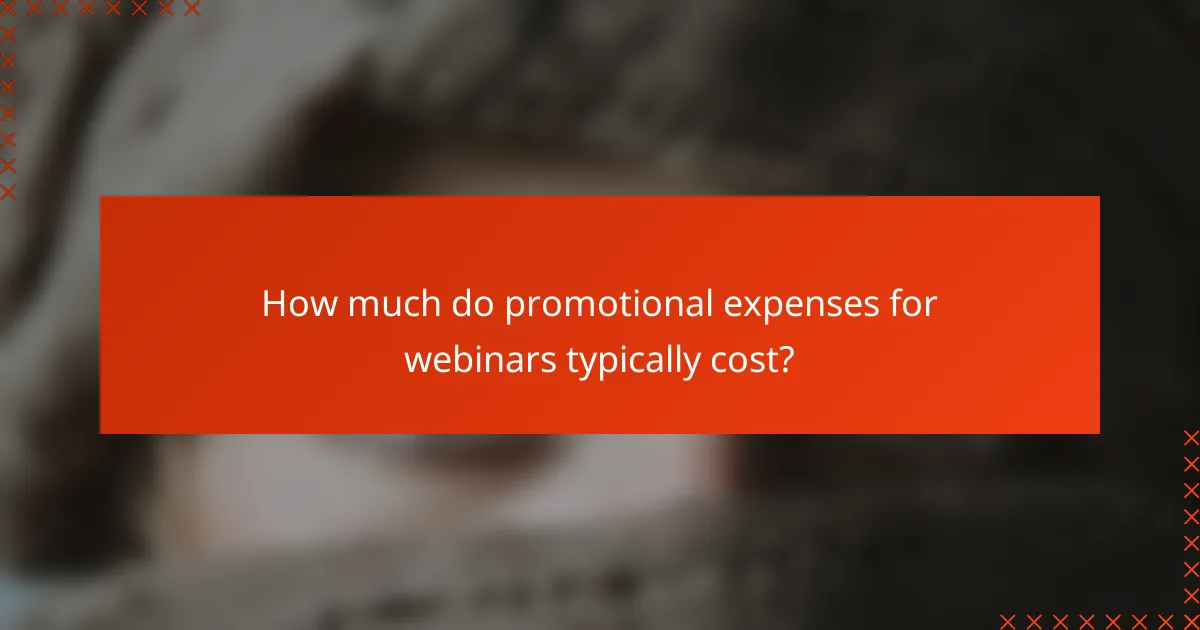
How much do promotional expenses for webinars typically cost?
Promotional expenses for webinars can vary widely based on the marketing strategies employed, but they typically range from a few hundred to several thousand dollars. Key costs include social media advertising, email marketing campaigns, and content creation, each contributing to the overall budget.
Social media advertising budgets
Social media advertising is a common method for promoting webinars, with budgets often ranging from $100 to $1,500 or more, depending on the platform and audience size. Facebook and LinkedIn are popular choices, with costs influenced by factors such as targeting options and ad formats.
When setting a budget, consider the cost-per-click (CPC) or cost-per-impression (CPM) models, which can help you gauge the effectiveness of your spending. Start with a small budget to test different ads and optimize based on performance.
Email marketing campaign costs
Email marketing is another effective promotional tool, with costs typically ranging from $50 to $1,000, depending on the email service provider and the size of your mailing list. Many platforms charge based on the number of subscribers, so it’s essential to choose one that fits your needs.
To maximize your email marketing budget, create engaging content and segment your audience for targeted messaging. Regularly analyze open and click-through rates to refine your approach and improve ROI.
Content creation expenses
Content creation for webinars can incur costs from $200 to $2,000 or more, depending on the type and quality of materials produced. This may include graphics, videos, and promotional copy that effectively communicate the value of your webinar.
Investing in high-quality content can significantly enhance your promotional efforts. Consider hiring freelancers or agencies if you lack in-house resources, but ensure that your content aligns with your brand and resonates with your target audience.
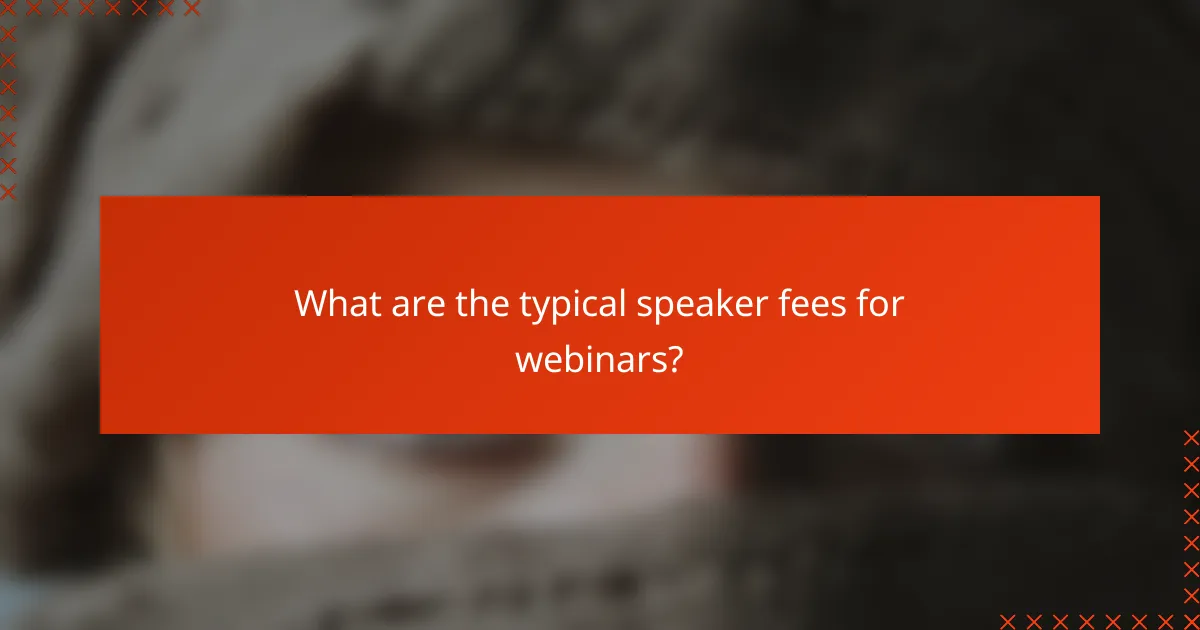
What are the typical speaker fees for webinars?
Typical speaker fees for webinars can vary widely based on the speaker’s experience, industry, and audience size. Fees may range from a few hundred to several thousand dollars, depending on these factors.
Industry expert fees
Industry experts often command higher fees due to their specialized knowledge and reputation. Fees for these speakers typically range from $1,000 to $10,000 per webinar, depending on their level of expertise and the demand for their insights. Consider the value they bring to your audience when determining the budget.
Influencer compensation
Influencers may charge varying amounts based on their follower count and engagement rates. Compensation can range from $500 to $5,000, with top-tier influencers potentially demanding more. When working with influencers, assess their alignment with your brand and audience to ensure a worthwhile investment.
Travel and accommodation costs
If speakers are participating in-person, travel and accommodation costs can add to the overall expense. These costs can include airfare, hotel stays, and meals, which may total anywhere from a few hundred to several thousand dollars, depending on the location and duration of the event. Always clarify who covers these expenses in advance to avoid misunderstandings.

What factors influence webinar technology costs?
Webinar technology costs are primarily influenced by audience size, feature requirements, and the platforms used. Understanding these factors helps in budgeting effectively and selecting the right tools for your webinar.
Audience size
The size of your audience significantly impacts the technology costs associated with hosting a webinar. Larger audiences often require more robust platforms that can handle increased bandwidth and provide additional features like breakout rooms or enhanced analytics.
For example, platforms may charge based on the number of attendees, with costs ranging from a few hundred dollars for small groups to several thousand for large-scale events. It’s crucial to estimate your expected audience size accurately to avoid unexpected expenses.
Feature requirements
Different webinars may require various features that can affect overall costs. Essential features might include screen sharing, recording capabilities, and audience interaction tools like polls and Q&A sessions. More advanced features, such as integration with CRM systems or marketing automation tools, can further increase expenses.
When selecting a platform, consider what features are necessary for your specific needs. A basic plan may suffice for simple presentations, while more complex webinars could justify investing in premium features. Always compare pricing tiers to find the best fit for your budget and requirements.
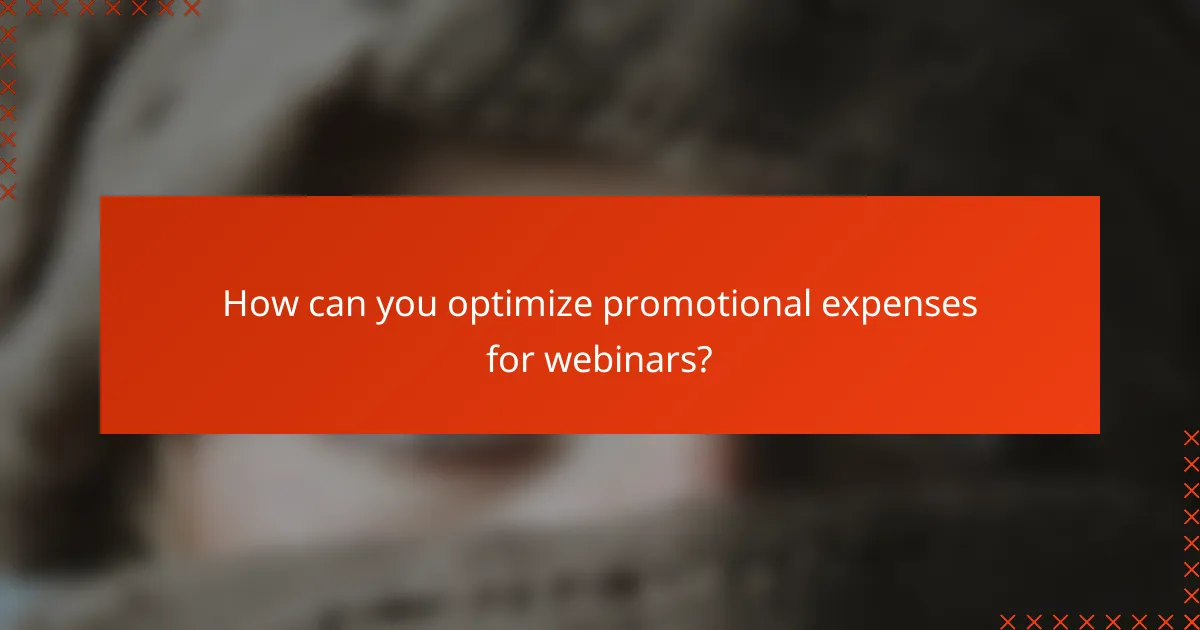
How can you optimize promotional expenses for webinars?
To optimize promotional expenses for webinars, focus on targeted strategies that maximize reach while minimizing costs. This involves selecting the right platforms and methods to engage your audience effectively without overspending.
Targeted advertising strategies
Utilizing targeted advertising strategies can significantly reduce promotional costs while increasing engagement. Platforms like Facebook and Google Ads allow you to specify demographics, interests, and behaviors, ensuring your ads reach the most relevant audience.
Consider allocating a budget for A/B testing different ad creatives and messages to identify what resonates best. A typical budget range might be between $100 to $500 for initial tests, depending on your audience size and goals.
Partnerships with industry influencers
Forming partnerships with industry influencers can amplify your promotional efforts without hefty expenses. Influencers often have established audiences that trust their recommendations, which can lead to higher attendance rates for your webinars.
When approaching influencers, consider offering them a small fee or a commission based on registrations generated through their promotion. This performance-based model can keep costs manageable while ensuring mutual benefit.

What are the emerging trends in webinar technology costs?
Emerging trends in webinar technology costs indicate a shift towards more affordable and feature-rich platforms. As competition increases, many providers are lowering prices while enhancing functionalities, making webinars more accessible for organizations of all sizes.
Cost-effective platforms
Many webinar platforms now offer tiered pricing models, allowing users to select plans that fit their budget and needs. Basic packages can start as low as $20 per month, while more advanced features may range from $50 to $200 monthly. This flexibility enables businesses to choose a solution that aligns with their specific requirements.
Popular platforms like Zoom, GoToWebinar, and Webex provide various pricing tiers, often including free trials. This allows organizations to test features before committing financially, ensuring they invest in the right technology.
Integration with marketing tools
Webinar technology is increasingly integrating with marketing automation tools, enhancing promotional capabilities. This integration can streamline the process of capturing leads and nurturing them through email campaigns, which can save time and reduce costs associated with separate systems.
For instance, platforms like HubSpot and Mailchimp offer seamless integration with webinar services, allowing for automatic registration and follow-up emails. This not only improves efficiency but also helps in tracking the return on investment (ROI) for marketing efforts.
Increased demand for interactive features
As audience engagement becomes a priority, many webinar platforms are incorporating interactive features like polls, Q&A sessions, and breakout rooms. These enhancements can lead to higher participation rates and more meaningful interactions, which can justify higher costs for premium services.
Organizations should consider the value of these interactive elements when evaluating costs. While basic webinars may suffice for information sharing, interactive sessions can significantly enhance audience retention and satisfaction, making them worth the investment.

